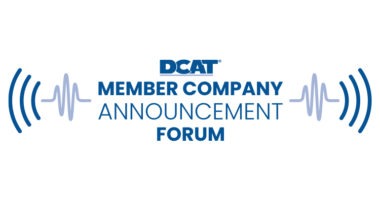US Sets Course for Biosimilar Pricing and Use
The approval of the first biosimilar in the US last month was only the beginning in the biosimilars market. Reimbursement and pricing policies are equally important. DCAT Value Chain Insights (VCI) examines how these federal and state measures may impact the biosimilars market.
Reimbursement and pricing policies are significant for any drug, but are particularly important for a still unproven entity in the US market, namely biosimilars. Although measures exist regarding generic substitution for small-molecule drugs on a payer level, this issue is evolving for biosimilars, where in the US, the first biosimilar was approved only last month. On a federal level, The Centers for Medicare & Medicaid recently issued information and guidances regarding reimbursement for biosimilars. On a state level, legislation affecting the dispensing of biosimilars has and is being debated in several states, once again drawing the battleground between the innovator-drug and generic-drug industries.
The entry of a biosimilar in the US market
The FDA’s approval for Sandoz’s Zarxio (filgrastim-sndz), the first biosimilar product approved in the United State, was based on the reference product, Neupogen, marketed by Amgen, which was originally licensed in 1991. Zarxio was approved for the same indications as Neupogen and can be prescribed by a healthcare professional for: patients with cancer receiving myelosuppressive chemotherapy; patients with acute myeloid leukemia receiving induction or consolidation chemotherapy; patients with cancer undergoing bone marrow transplantation; patients undergoing autologous peripheral blood progenitor cell collection and therapy; and patients with severe chronic neutropenia.
The regulatory pathways for biosimilars in the US was authorized by the Biologics Price Competition and Innovation Act of 2009 (BPCIA), which was passed as part of the Affordable Care Act that was signed into law in March 2010. The BPCIA created an abbreviated licensure pathway for biological products shown to be “biosimilar” to or “interchangeable” with an FDA-licensed biological product, called the “reference product.” This abbreviated licensure pathway under section 351(k) of the Public Health Service Act permits reliance on certain existing scientific knowledge about the safety and effectiveness of the reference product, and enables a biosimilar biological product to be licensed based on less than a full complement of product-specific preclinical and clinical data. A biosimilar product can only be approved by the FDA if it has the same mechanism(s) of action, route(s) of administration, dosage form(s) and strength(s) as the reference product, and only for the indication(s) and condition(s) of use that have been approved for the reference product. The facilities where biosimilars are manufactured must also meet the FDA’s standards.
The FDA’s approval of Zarxio was based on review of evidence that included structural and functional characterization, animal study data, human pharmacokinetic and pharmacodynamics data, clinical immunogenicity data and other clinical safety and effectiveness data that demonstrates Zarxio is biosimilar to Neupogen. Zarxio was approved as biosimilar, not as an interchangeable product. Under the BPCIA a biological product that that has been approved as an “interchangeable” may be substituted for the reference product without the intervention of the health care provider who prescribed the reference product. For this approval, the FDA designated a placeholder nonproprietary name for this product as “filgrastim-sndz.” The provision of a placeholder nonproprietary name for this product should not be viewed as reflective of the agency’s decision on a comprehensive naming policy for biosimilar and other biological products. While the FDA has not yet issued draft guidance on how current and future biological products marketed in the United States should be named, the agency intends to do so in the near future.
Reimbursement and pricing
CMS, the federal agency responsible for administering Medicare, explained that Medicare Part B (i.e., medical insurance) payment for newly approved drugs and biologicals is available once a product is approved by the FDA. CMS said it will incorporate biosimilars that are approved under the abbreviated biological approval pathway into the Average Sales Price (ASP) payment methodology and issue additional guidance as necessary. Initially, once the manufacturer’s wholesale acquisition cost (WAC) is available, Medicare will pay 106% of the WAC for the product until ASP information is available. Once ASP information is available for this biosimilar product, Medicare payment will equal the ASP for the biosimilar product plus 6% of the ASP for the reference product. CMS anticipates including the approved biosimilar in the next quarterly Healthcare Common Procedure Coding System (HCPCS) tape release, appearing in the claims processing system on July 1, 2015, effective retroactively to the FDA approval date, in this case for Zarxio (which was approved March 6, 2015). CMS said it will create a separate code to distinguish the biosimilar from the reference biological. CMS is considering policy options for coding of additional biosimilars and said it will release further guidance in the future.
With regard to Medicare Part D (i.e., prescription drug coverage), CMS said although coverage for filgrastim will generally be provided through Part B, it could also be covered under Part D in certain circumstances (for example, nursing homes or Intermediate Care Facilities for Individuals with Intellectual Disabilities ICF/IID)). CMS said it will be releasing guidance to plans confirming that biosimilars approved by the FDA will be subject to existing rules for prescription drugs under Part D.
CMS further amplified its position on Medicare Part D reimbursement. It said that biosimilars may provide Part D sponsors with new products that create formulary design options to help control costs while still ensuring beneficiaries have access to the medications they need. CMS said that existing formulary review and formulary change policies provide Part D sponsors with the flexibility to promote the appropriate use of biosimilars through their formulary and drug utilization management strategies when designing their Part D benefits.
“CMS will evaluate formulary change requests involving biosimilars on an individual basis and will determine if they meet the requirements of our formulary review and approval process based on information in the FDA-approved label and statutory compendia,” said the agency. “However, the reference and biosimilar products will not be considered as different drugs for the purposes of satisfying the two distinct drugs requirement for each of the submitted categories and classes, except as provided in 42 CFR §423.120(b)(2)(ii).”
CMS further said that biosimilars may be added to plan formularies at any time as a formulary enhancement. Formulary changes involving the addition of the biosimilar and removal of the reference biological product will generally be considered a non-maintenance change. These formulary changes will be evaluated, as are all non-maintenance changes, on a case-by-case basis, and allowed if the formulary continues to meet the formulary review standards with the corresponding addition of the biosimilar. Because biosimilars are not interchangeable with the reference biological product, CMS expects that Part D sponsors’ Pharmacy and Therapeutics (P&T) committees will review newly approved biosimilars in accordance with section 30.1.5 of Chapter 6 of the Medicare Prescription Drug Benefit Manual. For the purposes of Part D transition supply and notice requirements, CMS said that biosimilars and the reference biological product should be treated like different products. “Part D enrollees taking the reference biological product should receive a transition supply when only a biosimilar is available on the formulary. Similarly, Part D enrollees taking the biosimilar should receive a transition supply when the reference biological product is the only formulary product,” said the agency.
CMS further issued guidance to states on the classification of biosimilar biological products for rebate purposes and on strategies for states to use these products to reduce costs while improving access in terms of state Medicaid preferred drug lists. “State Medicaid programs should view the launch of biosimilar biological products as a unique opportunity to achieve measurable cost savings and greater beneficiary access to expensive therapeutic treatments for chronic conditions,” said CMS in the guidance. “States and managed care organizations are encouraged to provide biologics that achieve desirable, cost-effective clinical outcomes for beneficiaries using the various drug utilization and cost management tools theyhave available (e.g., step therapy, prior authorization, preferred drug lists) to the extent such tools are consistent with the state plan. In addition to the rebates received from manufacturers, cost savings may be achieved through the establishment of supplemental rebate agreements between states and manufacturers. States may consider the total rebates for reference biological products as well as those that have been determined to be biosimilar to, or interchangeable with, reference biological products in their determination of preferred drugs lists consistent with the requirements for prior authorization programs in section 1927(d)(5) of the Act [Social Security Act].”
Another issue in the biosimilar market is the role of state measure to include requirements for physicians and pharmacists on biological substitution. The regulatory approval pathway, as established by the federal law, distinguishes between biologic products that are “biosimilar” to an innovator biologic, meaning they are “highly similar” to an innovator product, and biologic products that meet a heightened standard to be deemed “interchangeable. Although FDA’s role in the approval of biologic and biosimilar medicines includes the designation of an interchangeable status, the policy on whether one biologic product may be substituted by dispensers when a different biologic product was prescribed is governed by state law and that is an issue that has engendered debate. In January 2013, the Biotechnology Industry Organization (BIO) issued its “five principles on biologic substitution,” a framework that it recommends that states follow in adopting policy on biological substitution. The BIO principles call for substitution only when FDA has designated a biologic product as interchangeable, authorizes prescribing physicians to prevent substitution, requires both the prescribing physician and patient to be notified of substitution, and requires the pharmacist and the physician to keep records of the substitution.
According to the National Conference on State Legislatures, in the past two years, at least 23 states have considered legislation establishing state standards for substitution of a “biosimilar” prescription product to replace an original biologic product. In 2014, eight states enacted statutes. One state (California) passed a bill through both chambers; it was vetoed by the governor. Thirteen other states had bills filed that did not pass, and one state (New Jersey) had bills from 2014 carried over to 2015. In early April 2015, Utah became the latest state to adopt a biological substitution law with respect to biosimilars, a move that was supported by BIO. The Utah Senate unanimously passed House Bill 279, a bill that amends provisions of the 2013 Pharmacy Practice Act, on March 12, 2015. This action follows House passage of the same bill earlier in March. The bill was signed into law on April 1, 2015.




